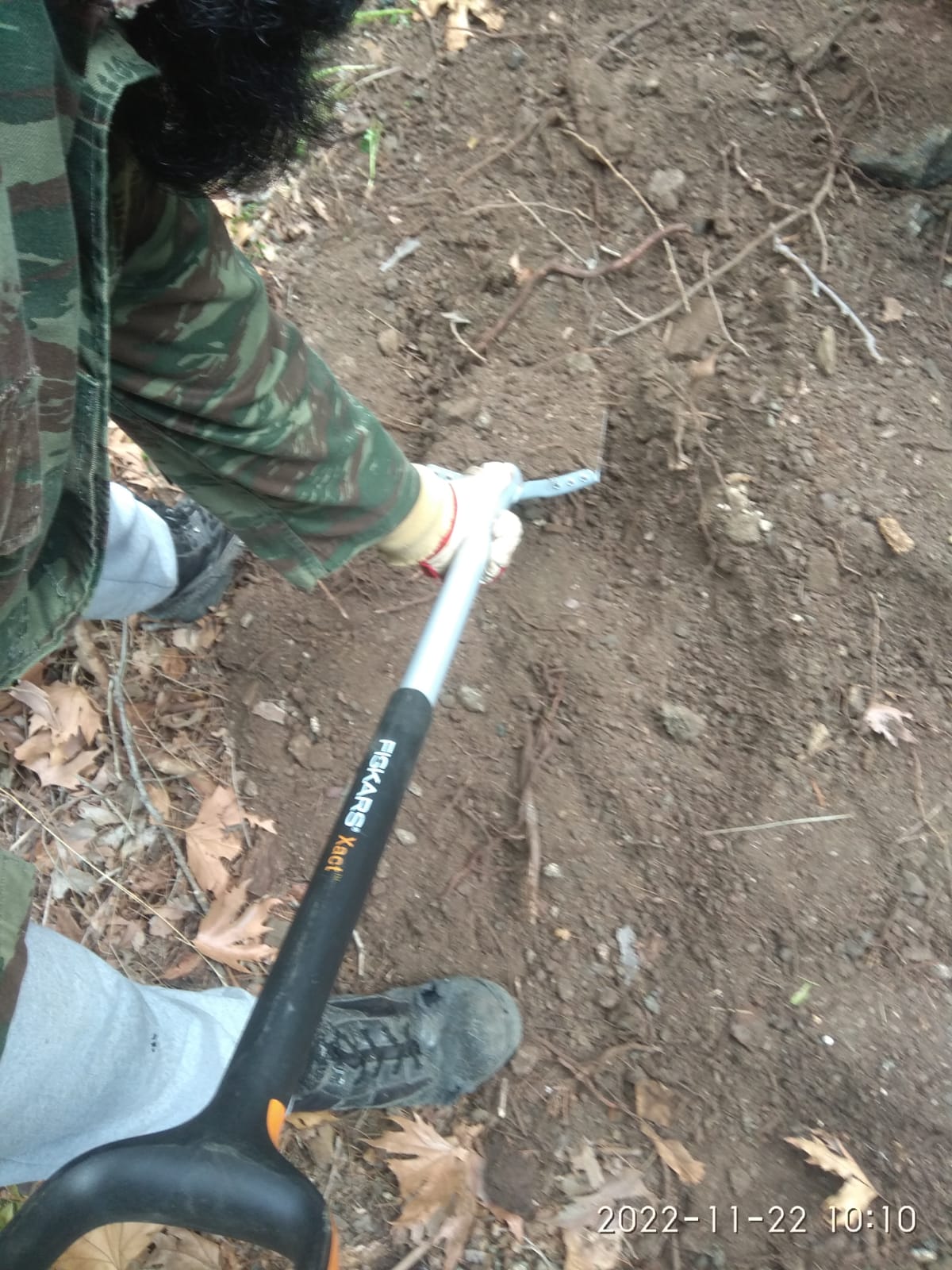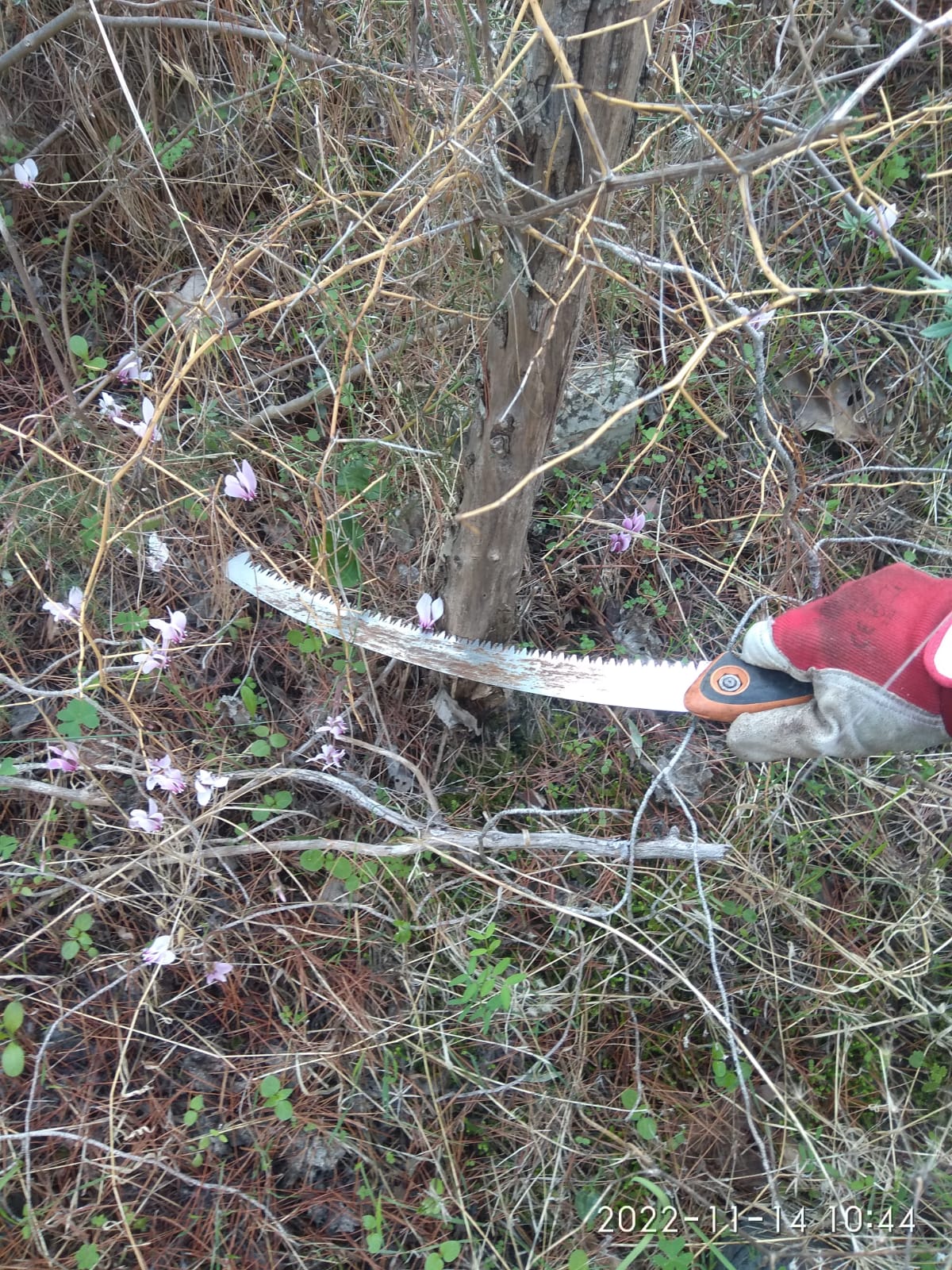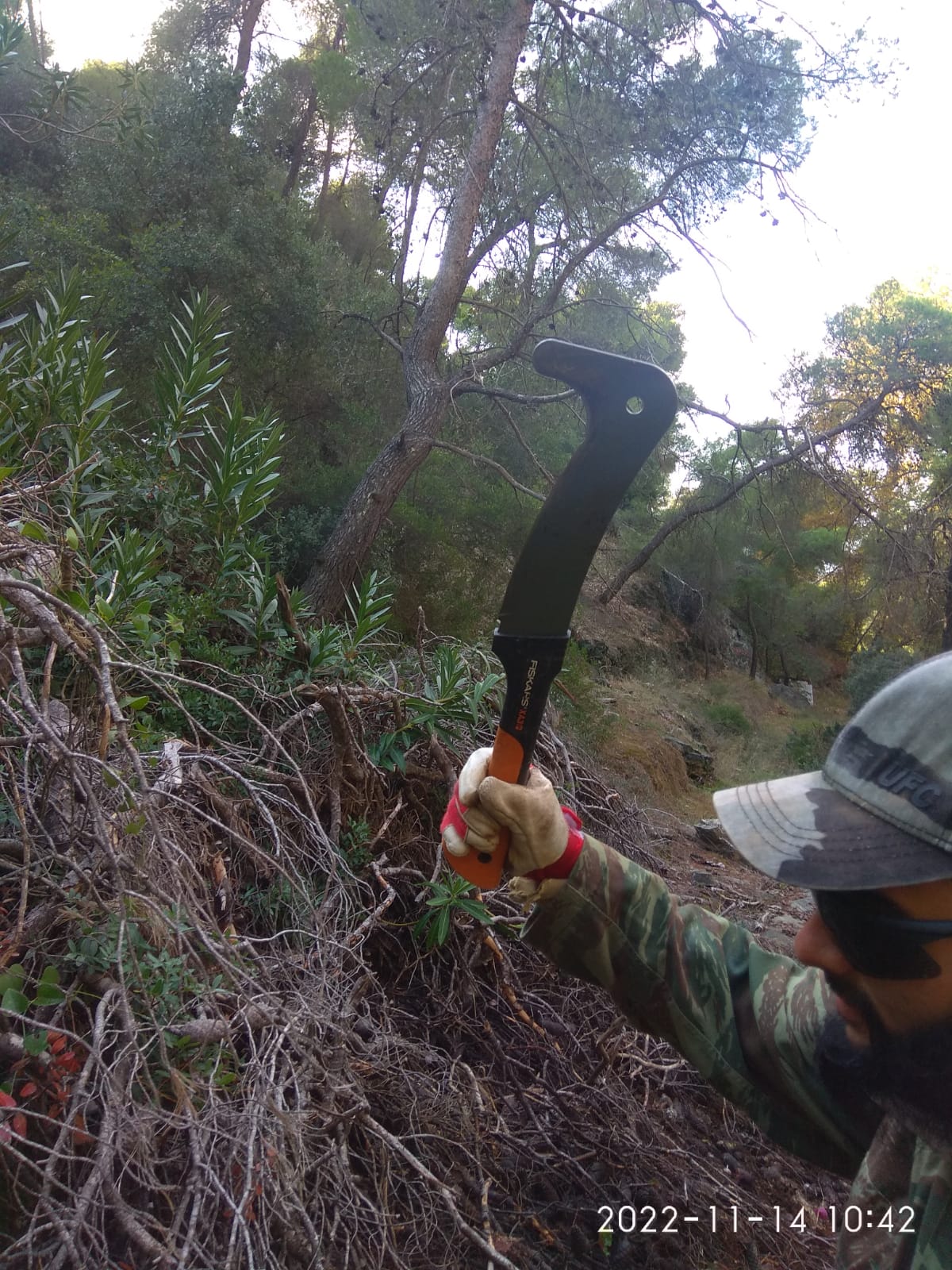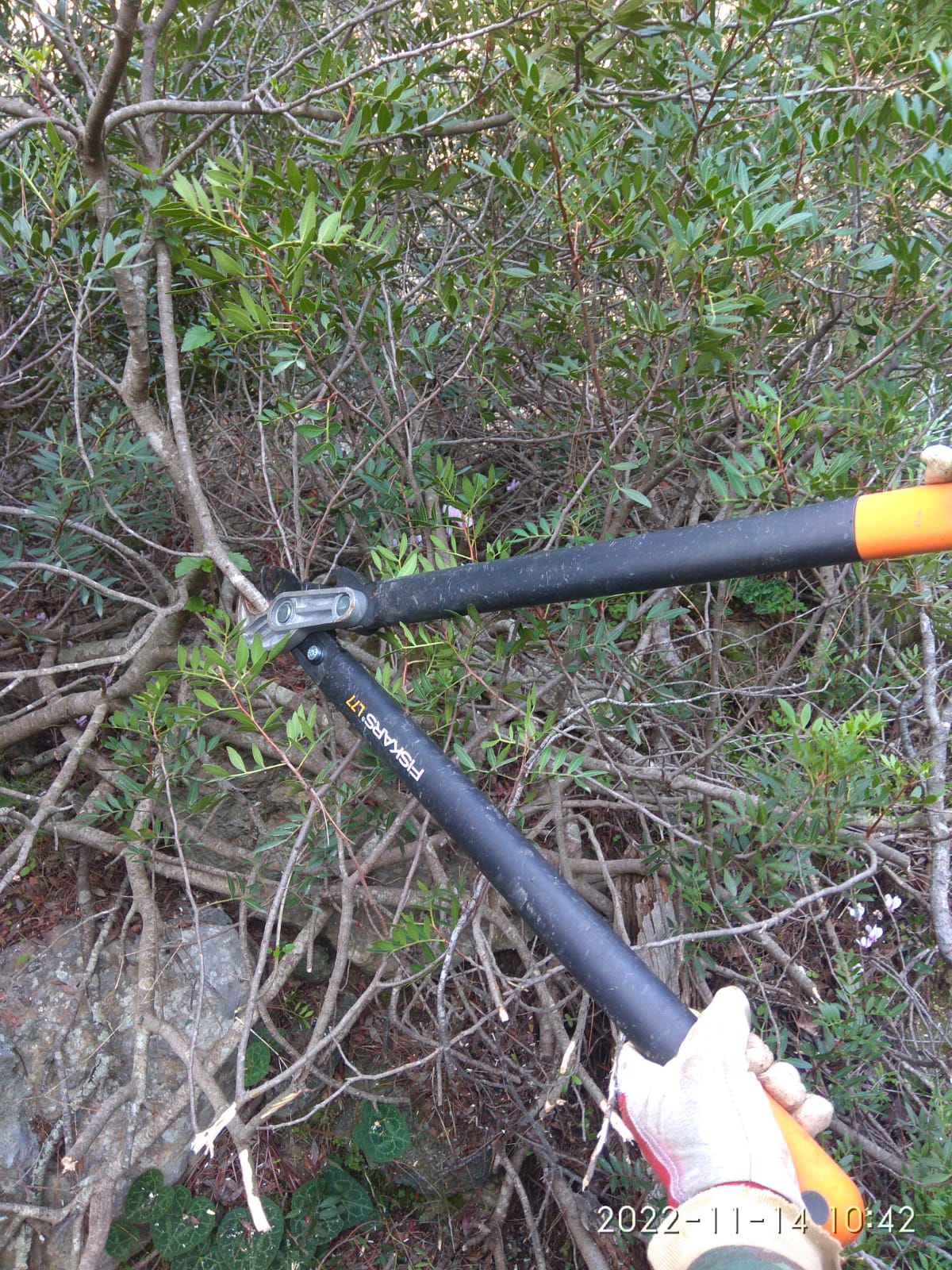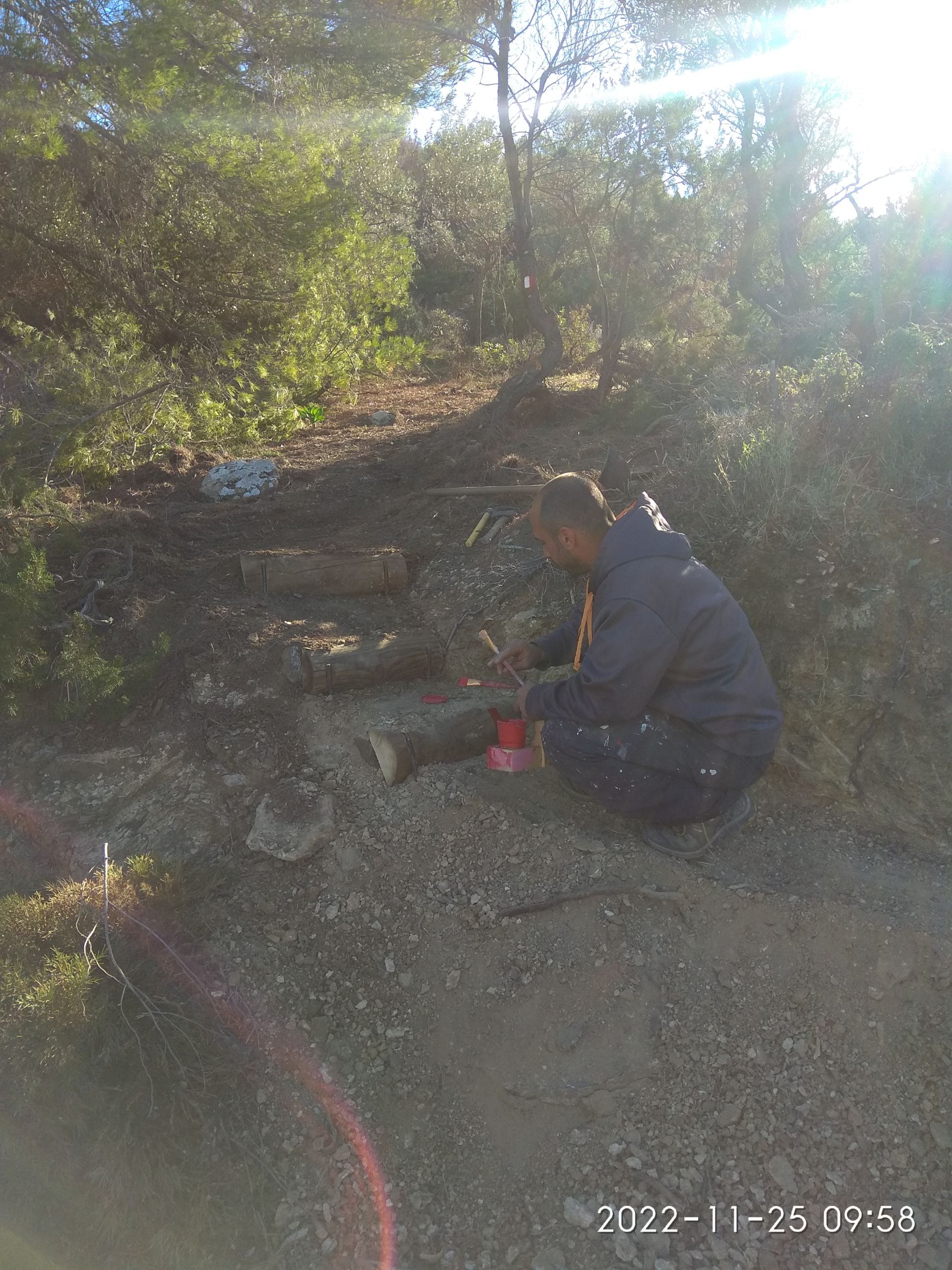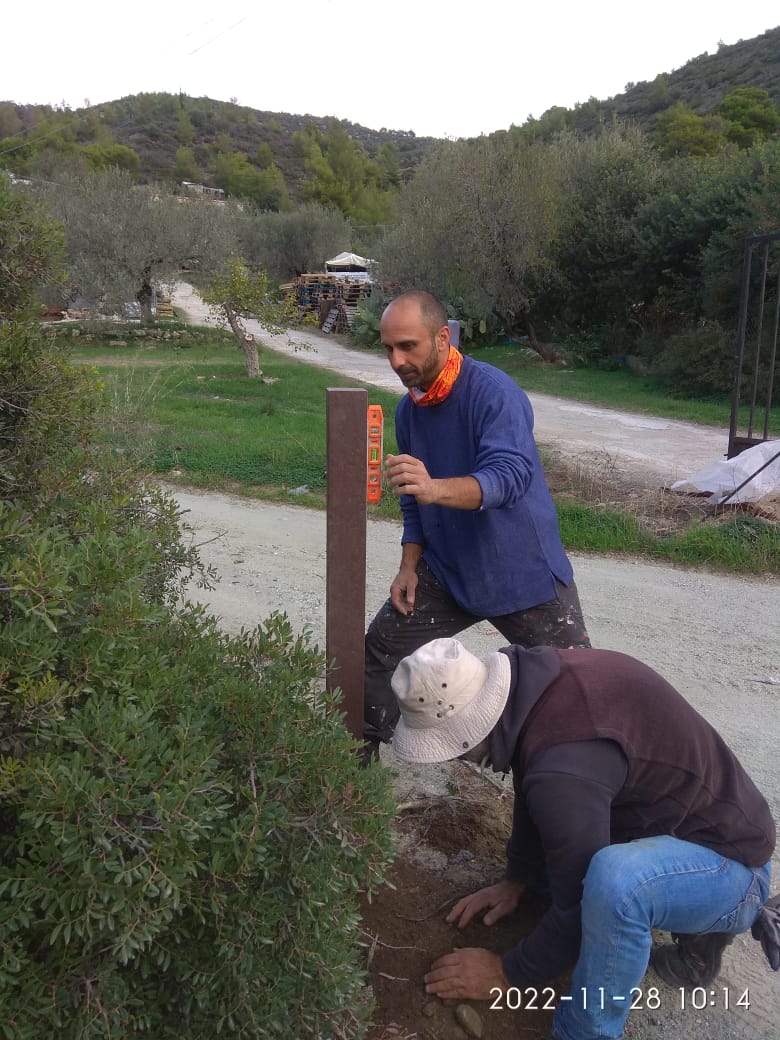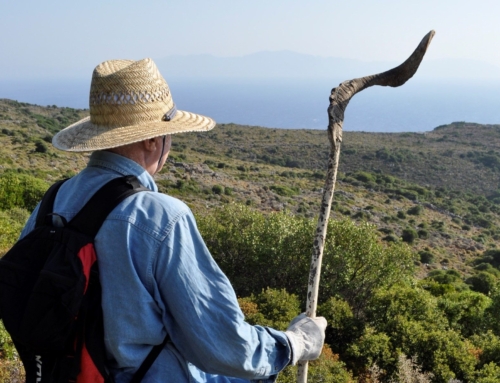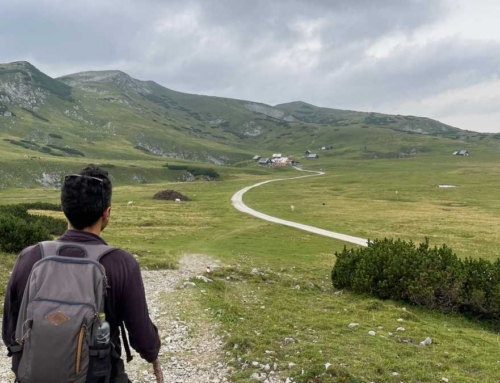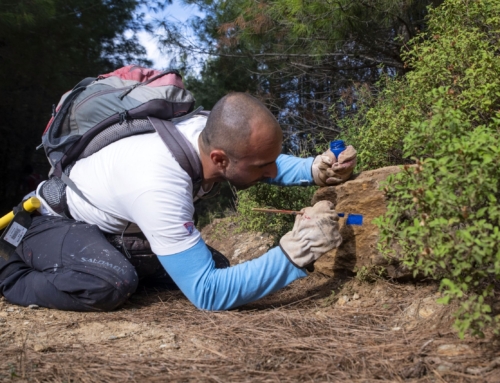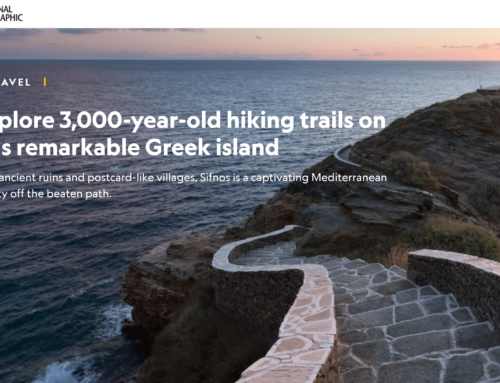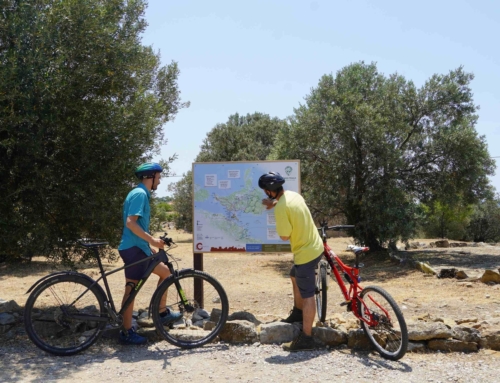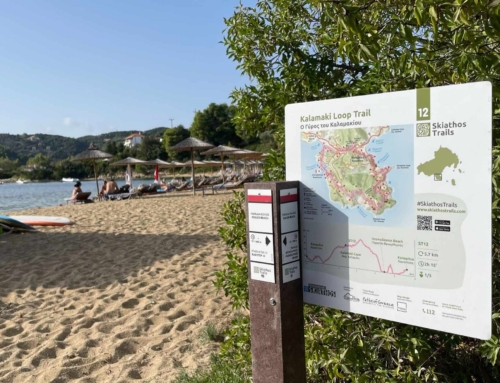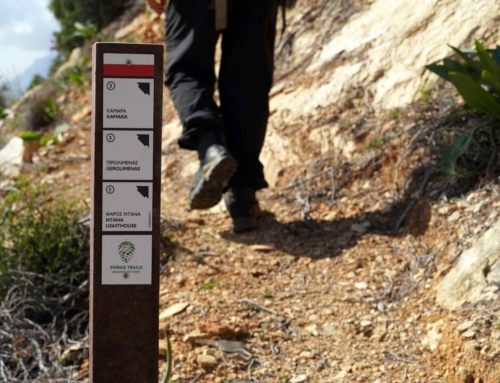
Antonis Panou is a member of Paths of Greece and specializes in waymarking and maintaining hiking paths. He has been part of our team for about 5 years and has traveled all over Greece in order to implement hiking trail networks, always with the highest standards. Antonis took part in the Paths of Greece trip to Central Europe!
How do you describe paths maintainance? What exactly do we mean when we say we clear paths?
Today people don’t use the hiking trails for their transportation, so nobody is caring for them. Thus, the old paths were abandoned and lost, and after years became one with nature.
However, in recent years many people have the need to get in touch with nature. To do this, the best way is to hike a trail. Trail clearing is necessary for this to happen.
When we clear paths we mean the following: trees and big bushes with thorns that nothing can get through. Rotten fallen trees and stones. Even in cases where we encounter low dense vegetation, getting through will most likely cause wounds.
The cleaning of stones and some small technical works such as building steps are part of the cleaning. There are also the maintenance works which are mainly the cleaning of the seasonal vegetation.
It is tedious work and requires patience but the result is of great importance. Once the cleanings are done it’s like you’ve opened up a new world.
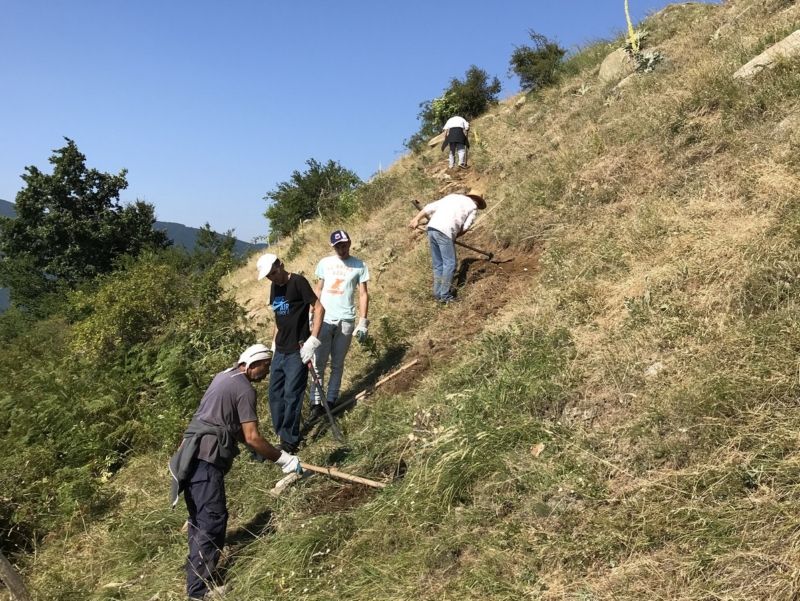
Which routes do we maintain and why?
Initially, the clearing is done with the aim of creating a new hiking trail network. The trail networks consist of old trails, recently surveyed and mapped, that have not been walked for many years. These are usually lost in the vegetation. So, to make them accessible again, we clean them of grasses, blackberry bushes, fallen trees, bushes, thorns, tree branches and generally dense vegetation and stones. Then, as I mentioned, maintenance cleanings are also done on some paths annually.
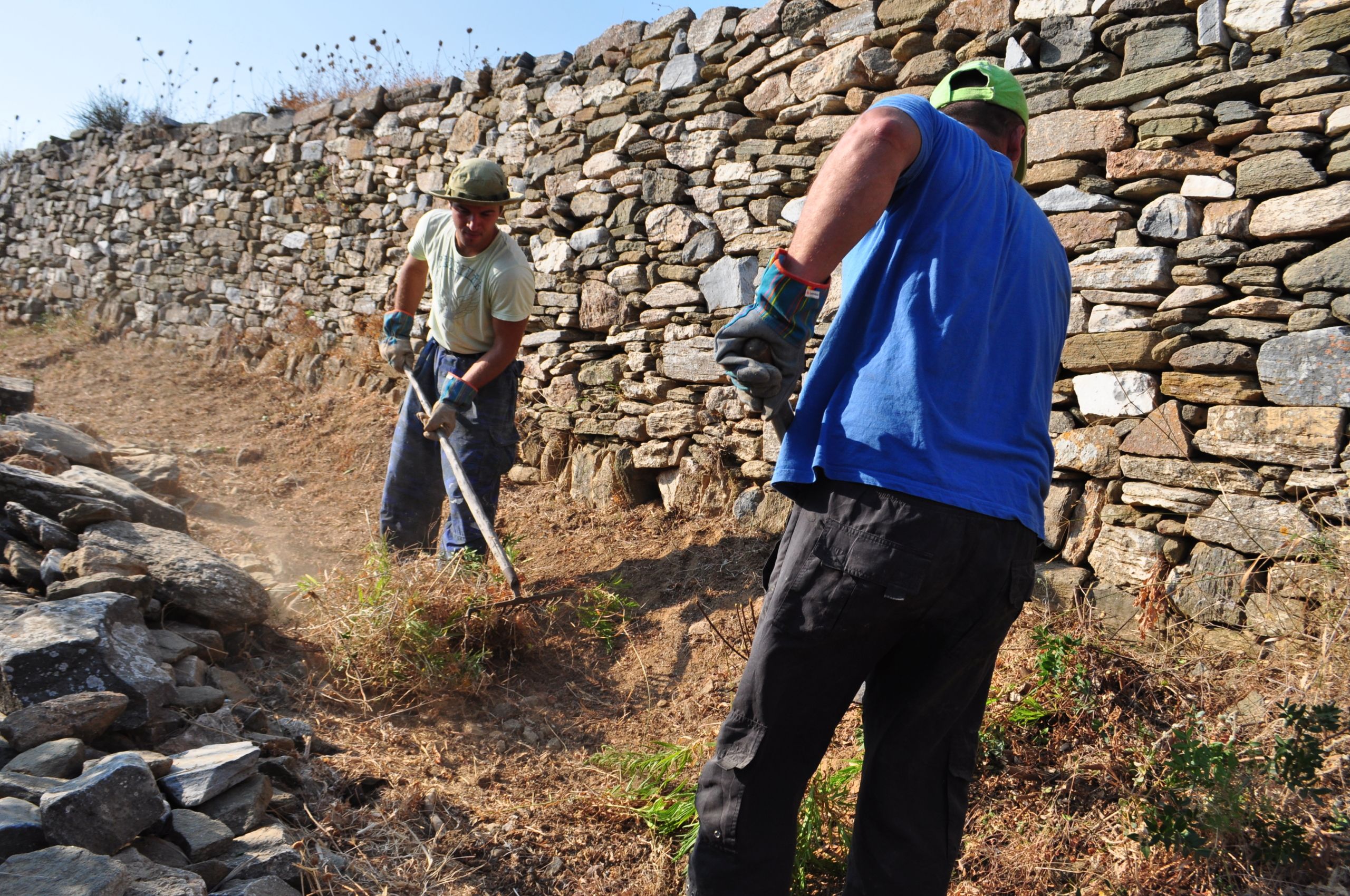
When is the best time to do maintainance?
The best time for maintainance is Spring, since that’s when the vegetation blooms and grows. For example, if the clearing is done in February, then it is very likely that in April many places will have become a “jungle” again from the seasonal vegetation.
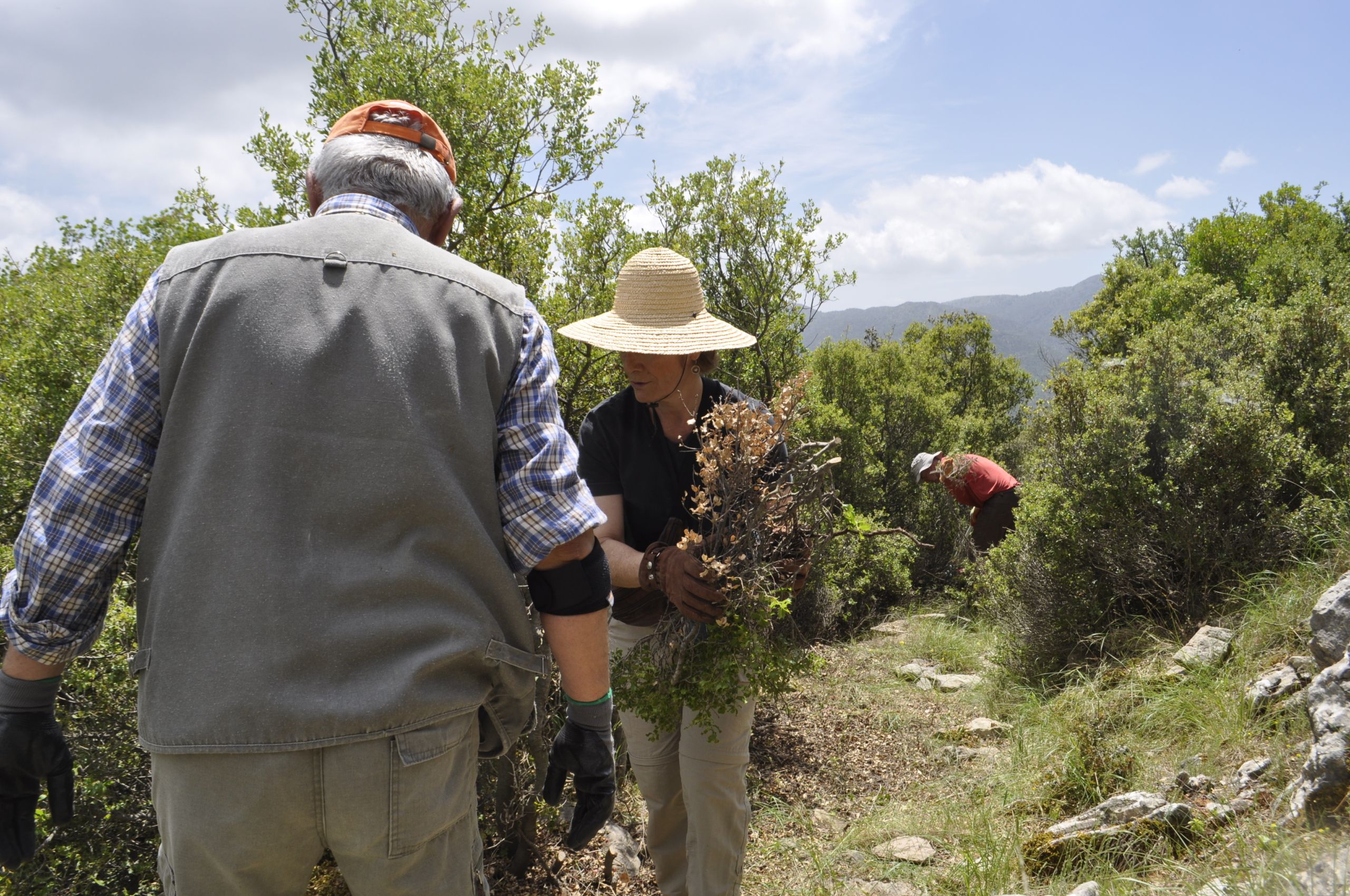
What is the best method of maintainance?
The best method is the classic method that has always been used, that is, with manual work and a lot of patience. The only difference today is that we have better tools with more options. An example of reliable tools is that of the Fiskars company.
The best recipe is a strong team, good communication, teamwork, timing, good tools and good organization in general is what is needed to make cleaning easy.
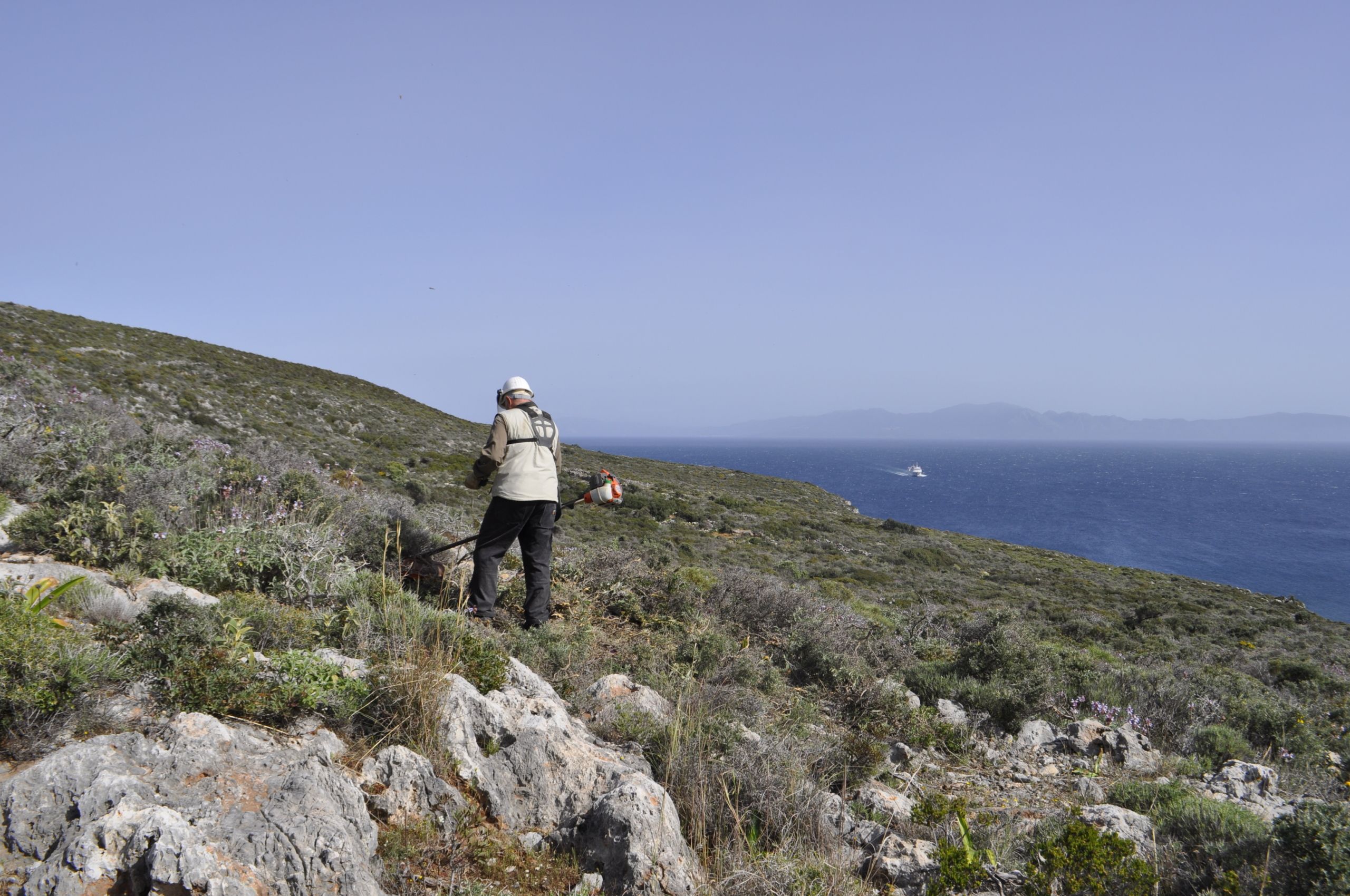
What is tiring you the most during maintainance?
As I mentioned earlier, the best time for maintainance is Spring, because of the flowering of plants and the growth of vegetation. Unfortunately, we don’t always have that option. In short, what is most tiring is the heat and the sun. Not all paths pass through shaded forests. There are many places in Greece that are rocky, without tall vegetation. In such places we try to avoid the summer season. If we are there in the summer months, then we start as early as possible, even before dawn.

I will also mention a combination of vegetation, which, if we encounter it, is sure to make our work very difficult. There are sometimes bushes, big, dense, with rich foliage and many branches, which block the path. These branches are often connected to a central trunk. If you find the trunk and cut it, then the whole bush goes away, without much effort and a lot of time. However, there are similar bushes with the difference that the branches are not connected. This makes it very difficult to clean them, especially when there are tangled blackberry bushes inside them.
Finally, I personally get tired of rocky places, which are full of stones, low vegetation, bushes, thorns and no trees anywhere. Such vegetation, in such places, modern tools cannot help. Therefore, cleaning is traditionally done with hoes and pickaxes, i.e. by digging. No shade anywhere and digging all day, I get tired just thinking about it. Of course, we’ve done those too. We cleaned the paths of Kasos with hoes and hand tools during July!

What kind of tools do you use to clear paths?
Agricultural tools. Very basic are the chainsaw and brush cutter. From there, hand tools such as hoes, pruners, pickaxes, saws, scissors, machetes and rakes. Finally a branch shredder.
In regard to mechanical tools there are some companies that have very good products and you can easily buy good tools that get the job done. But there is an issue with hand tools, as there are many companies in the trade that do not have quality tools, that is, they are garden level, for personal use. For the last year we have been using tools from the Finnish company Fiskars, which so far have proven themselves very well, tested in the most difficult conditions, such as in Kasos.
Finally, I want to say that in Greece there are many difficult and wild places. I believe that the big agricultural tool companies should test their products in the Greek nature. If their tools can withstand this test, then they will know they are the best. In general, the enemy of tools is stone, and Greece is full of stone.
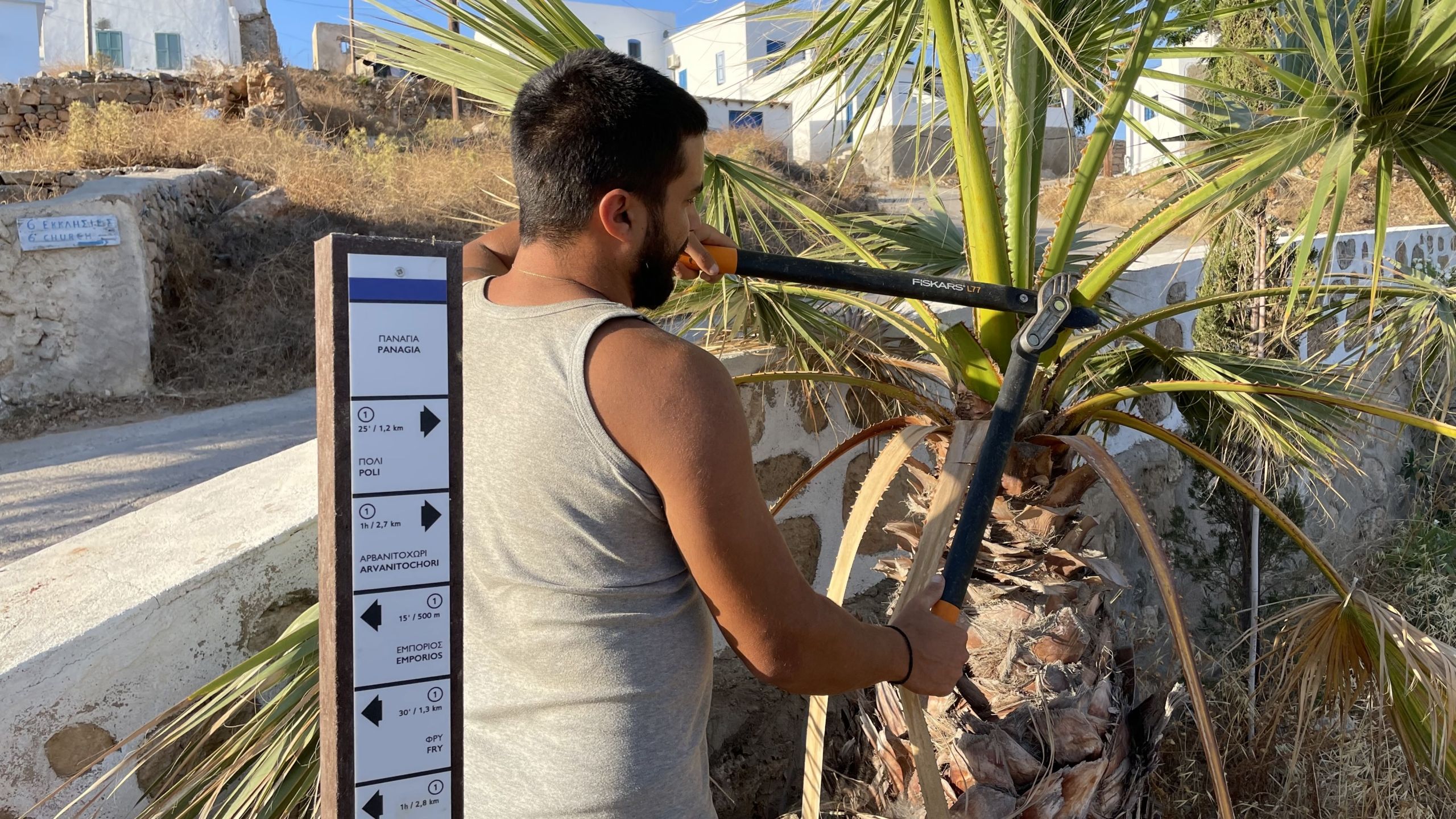
If someone wants to maintain a trail in their area, where would you suggest they start?
If someone wants to clear a path, there is no easy solution. He has to go and clear it with his tools and his hands. First you start with the difficult obstacles, such as fallen trees, thick branches, large bushes, thorns and large stones. Then, if necessary, you go through with the lawn mower and rake, and clean.
In other cases, you may have to do all the work with the lawnmower alone. Always depending on the vegetation of each place.
If the path has various elevations, it is best to start from the top to the bottom. Depending on the landscape and vegetation you get the appropriate tools.
Depending on the type of work and the place, there is the possibility that a permit from the local forestry is also needed. Therefore, it would be good to consult with the relevant services before starting work.
Below, a short video with the process of creating the hiking network of Kasos:

